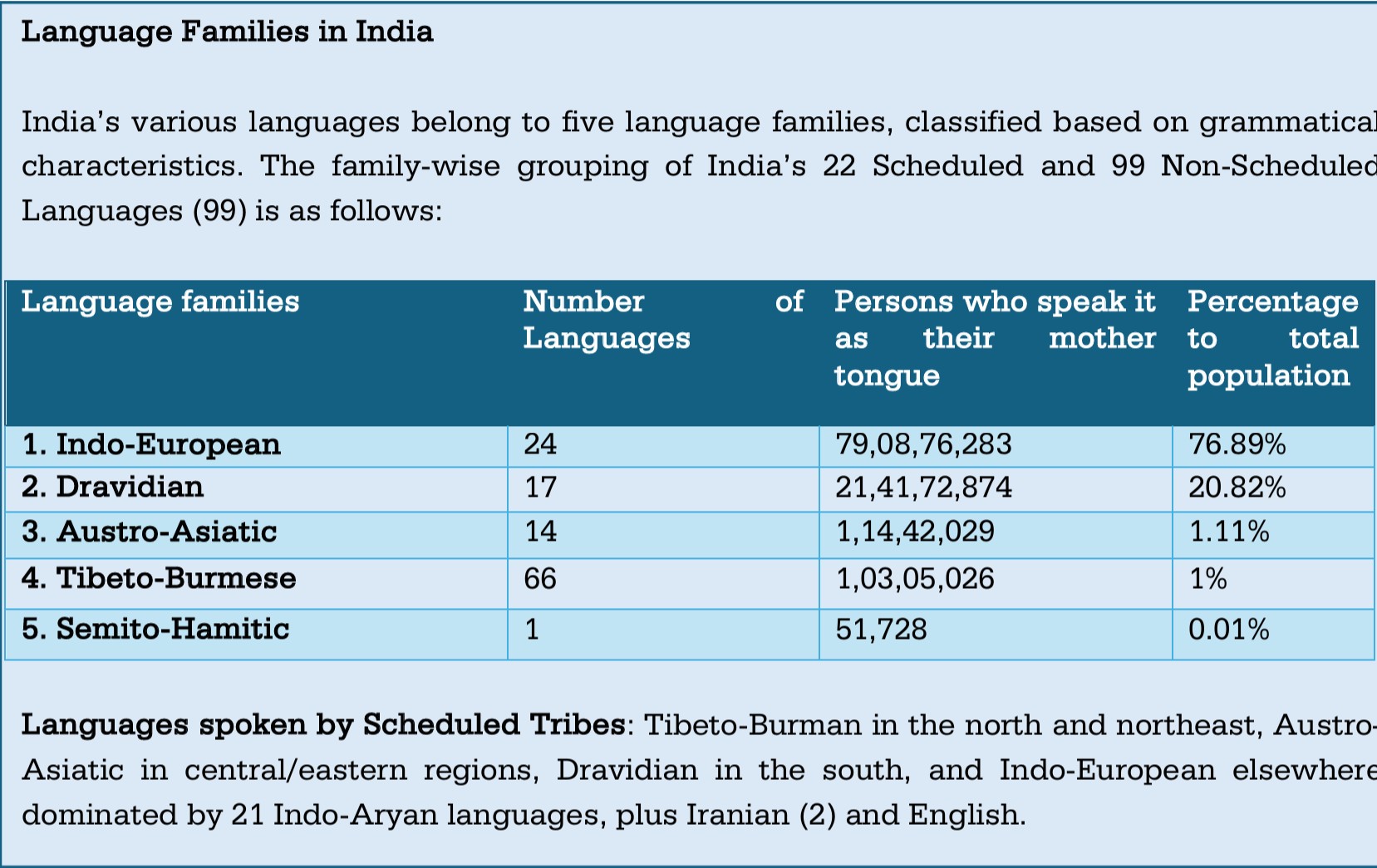Documenting India’s Endangered Languages

- 18 Aug 2025
Context:
India is home to one of the world’s richest linguistic landscapes, with the 2011 Census recording over 2,800 mother tongues, of which 1,369 were classified as recognized languages. However, many languages remain vulnerable: those spoken by fewer than 10,000 people are categorized as endangered.
According to the Scheme for Protection and Preservation of Endangered Languages (SPPEL) of the Central Institute of Indian Languages (CIIL), 117 endangered languages have been identified, and efforts are underway to document nearly 500 lesser-known languages in the future.
The Case of the Toda Tribe
The Toda tribe of the Nilgiri Hills in Tamil Nadu exemplifies India’s efforts at language preservation. Toda is a proto-South Dravidian language without a native script, spoken by only a few thousand people today. Traditionally oral, it encapsulates the community’s myths, rituals, and ecological knowledge. Under SPPEL, Toda elders have collaborated with linguists to record stories, songs, and vocabulary, producing primers in the Tamil script for schoolchildren and uploading digital archives to Sanchika, CIIL’s online repository launched in 2025. This initiative not only preserves linguistic material but also strengthens cultural identity.
Government and Institutional Efforts
SPPEL employs a systematic process of recording, transcription, grammar construction, cultural documentation, and digital archiving. Advanced tools—such as high-end audio-video equipment and linguistic analysis software—are used to create bilingual dictionaries, pictorial glossaries, and ethno-linguistic profiles.
Complementary schemes also support linguistic diversity. The Ministry of Tribal Affairs, through the TRI-ECE initiative, has funded AI-based translation tools to convert Hindi/English text into tribal languages. The Ministry of Culture promotes folk and tribal arts through programs such as the National Mission for Cultural Mapping and the Rashtriya Sanskriti Mahotsavs, while the Sahitya Akademi organizes annual tribal writers’ meets. These interventions align with the National Education Policy 2020, which emphasizes multilingual education.
Global Perspective
The erosion of linguistic diversity is not unique to India. UNESCO estimates that nearly half of the world’s 7,000 languages are endangered, with the loss of each language erasing irreplaceable cultural heritage. Recognizing this, UNESCO has declared 2022–2032 as the International Decade of Indigenous Languages, urging global stakeholders to act. The International Day of the World’s Indigenous Peoples (August 9) further highlights indigenous rights and cultural preservation.
Technology has emerged as both a challenge and a solution. While AI systems often appropriate indigenous knowledge without consent, initiatives such as New Zealand’s Te Hiku Media for M?ori and Polynesian reef conservation projects demonstrate AI’s potential for revitalization. In India, the integration of AI into language preservation efforts reflects this global trend.
Way Forward
Preserving endangered languages is critical for safeguarding traditional ecological knowledge, oral heritage, and cultural diversity. India’s multilingual character—where 22.9 crore people are bilingual and 8.6 crore are trilingual—creates opportunities for inclusive education models that protect minor languages while enabling wider communication. Community-driven documentation, AI-enabled tools, and government support can ensure continuity across generations.
As UNESCO Director-General Audrey Azoulay has noted, “Language is what makes us human. When people’s freedom to use their language is not guaranteed, this limits their freedom of thought and expression.” For India, the preservation of endangered languages is not merely cultural—it is a matter of equity, identity, and sustainable development.
